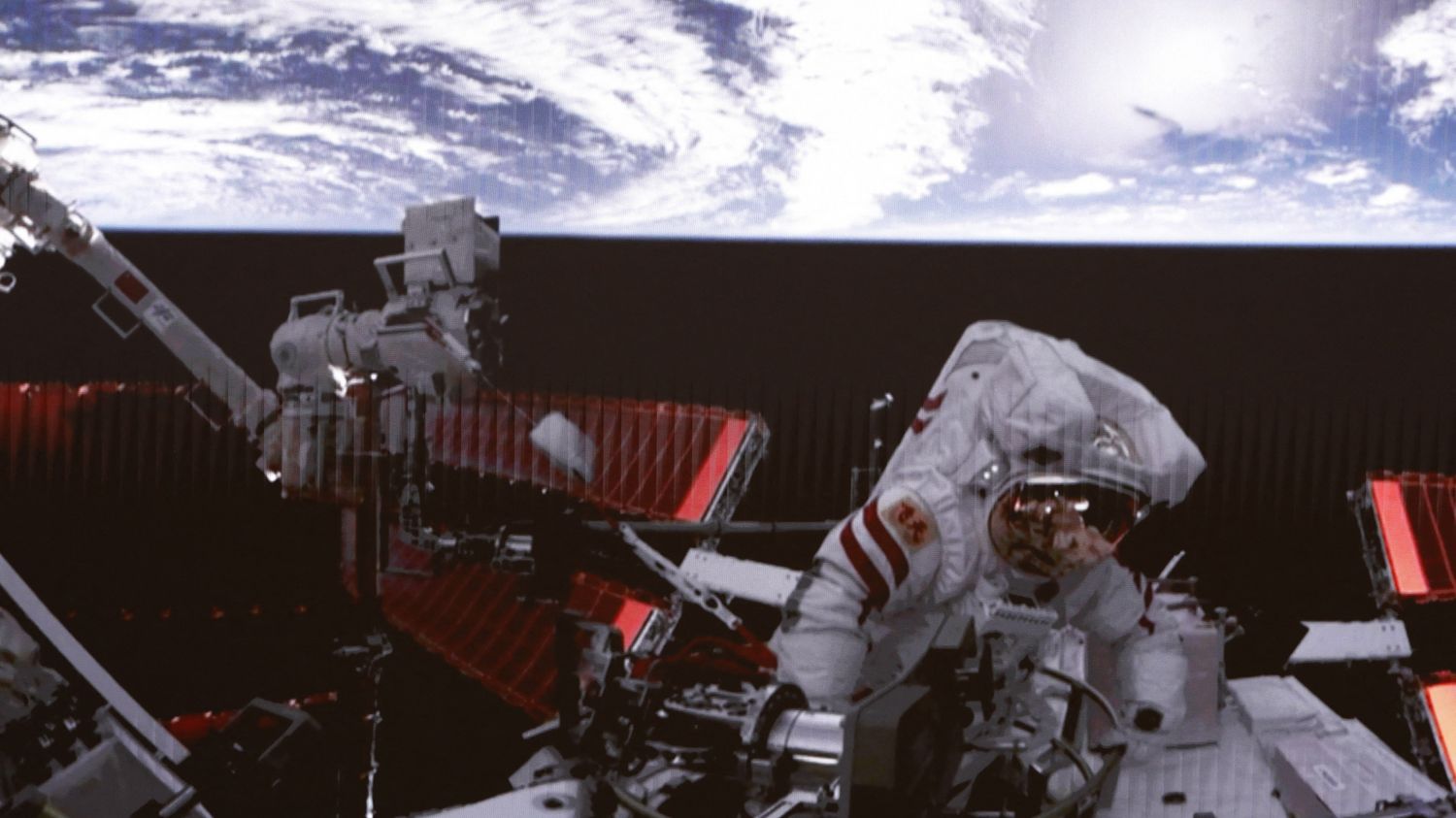The average age of the Shenzhou-17 mission crew is 38 years old. Beijing has been developing an ambitious space program for several years, with its sights set on sending the first Chinese to the Moon by 2030.
Published
Reading time :
2 min

China is due to send its youngest crew of astronauts into space on Thursday to its Tiangong space station, officials announced on Wednesday (October 25). The Shenzhou-17 mission trio will take off from the Jiuquan launch center in the Gobi Desert. It includes Commander Tang Hongbo, born in October 1975 and aged around forty, his colleague Tang Shengjie (33 years old) as well as Jiang Xinlin (35 years old). The average age of the crew is therefore 38 years old, compared to 42 years old during the previous Shenzhou-16 mission.
The ship must dock with the central module of Tiangong station “about half past six” after takeoff, said a spokesperson for the Chinese space program, Lin Xiqiang. Tiangong, whose construction is now complete, has had its final T-shaped appearance for several months. Similar in size to the former Russian-Soviet station Mir, it is however much smaller than the International Space Station (ISS). Also known as CSS (for “Chinese Space Station” in English), it must remain in Earth orbit for at least ten years.
A space program in constant progress
Chinese astronauts provide crew rotations, permanent occupation of Tiangong, maintenance and research work, as well as a slow expansion of the station’s capabilities. In May, China sent its first civilian astronaut, Gui Haichao, a specialist in space science and engineering, into space as part of a previous mission. He did not come from the armed forces as was systematically the case before.
China was partly pushed to build its own station by the United States’ refusal to allow it to participate in the ISS. An American law prohibits almost any collaboration between American and Chinese space authorities. The Asian giant, however, wishes to carry out international cooperation around Tiangong, particularly for carrying out experiments. China has already invested billions of euros in its space program.
China has some catching up to do in this area, because it only sent its first human into space in 2003 – a long time after the Soviets and the Americans in 1961. But its space program has been progressing steadily for several years. decades. In 2019, the country landed a machine on the far side of the Moon, a world first. In 2020, it brought back samples from the Moon and finalized Beidou, its satellite navigation system. And in 2021, China landed a small robot on Mars. Its goal is to send a Chinese person to the Moon by 2030.
